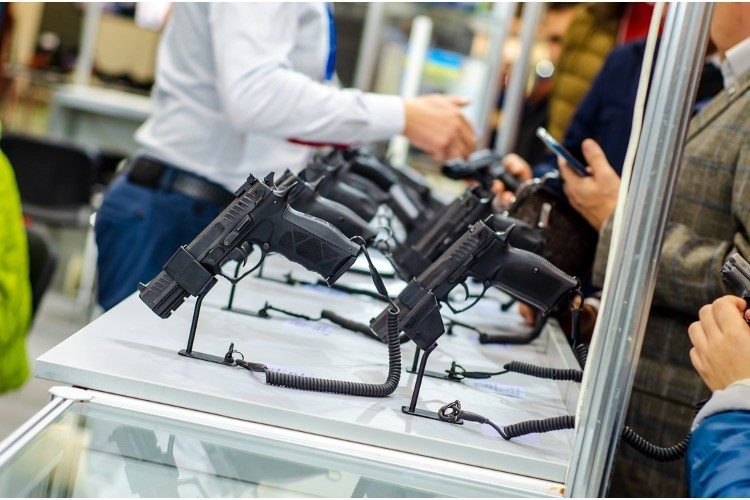
Here’s some food for thought: There are more than 393 million firearms in the United States.
Americans have been buying in excess of one million guns per month for the last four-plus years.
Our nation also leads the world, by far, in number of firearms owned per 100 civilians.
Yet the United States is not in the top 50 countries in murder rate — and may be outside the top 100.
What’s more, though gun ownership has been increasing markedly, big American cities experienced a significant decline in shootings in 2023, with the murder and shooting rates dropping below pre-pandemic levels. This is despite the fact that crime has risen in general.
So is the United States really the Wild West of murder and mayhem anti-Second Amendment advocates claim? And is there really any correlation between strictness of gun-control laws, or firearm ownership rates, and murder rates?
Writing last week, firearms instructor and retired police officer Mike McDaniel answers in the negative — and paints a positive picture.
Citing a video from commentator Bill Whittle titled “Number One With A Bullet,” McDaniel writes that “America is not first, tenth, not even fiftieth in the world in per capita homicides, but one hundred eleventh.” The video is eight years old, McDaniel points out, so the stats may now be different. Yet no source places the United States among “the most violent countries.”
For example, this 2017 list from the United Nations has the United States in 55th place, the World Population Review places us at 76, and index mundi says 64. Moreover, 2023’s major decline in murder and shootings may mean that we’re today lower still.
Yet more must be said. “Eliminating statistics from our most murderous, d/S/C [Democrat] ruled cities,” McDaniel also informs, “if we had the same per capita murder rate as Plano, Texas — .4 per 100,000 — which Whittle affirms [is] one of the best armed cities in America, we’d be not one hundred eleventh in the world, but two hundred eleventh in the world.”
So what are the most dangerous countries, actually? McDaniel provides this list:
- Honduras
- Venezuela
- United States Virgin Islands
- Belize
- El Salvador
- Guatemala
- Jamaica
- Lesotho
- Swaziland
- Saint Kitts and Nevis
The above varies somewhat depending on the source and year, but, mainly, what changes are not the countries, but their order.
Yet something that doesn’t change, writes McDaniel, is “that all of these countries/territories are either socialist, strictly gun controlling, or both.”
But what about mass shootings? Aren’t they uniquely “American”? Well, try this on for size:
“Over the 20 years from 1998 to 2017, the US had less than 1.13% of the world’s share of mass public shooters and 1.77% of its mass public shooting murders,” McDaniel states. “That’s much less than the US’s 4.6% share of the world population.”
“This holds true for school attacks as well, which remain thankfully rare,” he adds.
In reality, there’s no correlation between gun-control-law strictness and murder rate. Just consider some more little-known facts:
- Countries such as Russia, Mexico, and Brazil have far stricter gun laws than the United States, but also more homicide. Furthermore, as Professor Thomas Sowell wrote in 2012, “Gun ownership has been three times as high in Switzerland as in Germany, but the Swiss have had lower murder rates. Other countries with high rates of gun ownership and low murder rates include Israel, New Zealand, and Finland.”
- Great Britain has a lower homicide rate than does the United States. But the U.K. has always had a lower homicide rate — even back when both nations had few gun-control laws — and the U.K.’s gun-crime rate is higher now than it was then. Moreover, states such as New Hampshire have lower murder rates than does Britain despite having far higher gun-ownership rates.
- Vermont has approximately the same gun-ownership rate as Louisiana but one-eighth the murder rate.
- Despite Japan’s very strict gun-control laws, Japanese-descent Americans living in the United States — with relatively easy access to firearms — have a murder rate half that of Japanese living in Japan.
- As Dr. Sowell also informed, the rate of gun ownership “is higher in rural areas than in urban areas, but the murder rate is higher in urban areas. The rate of gun ownership is higher among whites than among blacks, but the murder rate is higher among blacks. For the country as a whole, handgun ownership doubled in the late 20th century, while the murder rate went down.
- People over 50 are more likely to own guns than those under 50, but the latter have a higher murder rate.
The explanation? Demographics. As Sowell puts it, it’s not the guns that explain the different murder rates. It’s the people.
With regard to surviving murder attempts, however, guns do make a difference. In fact, “Every study done since the Clinton Administration reveals Americans successfully, defensively use guns, usually without firing a shot, from 500,000 to 2.5 million times each year,” McDaniel also tells us. “Many of these studies were done by government, particularly the CDC, before Congress, in 1996, prevented it from spending money on anti-liberty/gun ‘research.’ The Clinton Administration tried a study, confident it would provide more ammunition for gun bans, and found 1.5 million defensive gun uses per year. They tried to bury the study, but it leaked.”
Related to this, too, do note, a 2018 study that cited the FBI found that armed citizens are successful at thwarting active shooters 94 percent of the time.
And this is for sure: When anarchy reigns — as during the L.A. riots or in Hurricane Katrina’s wake — and the police are nowhere to be found, without a gun you’re easy prey 100 percent of the time.


